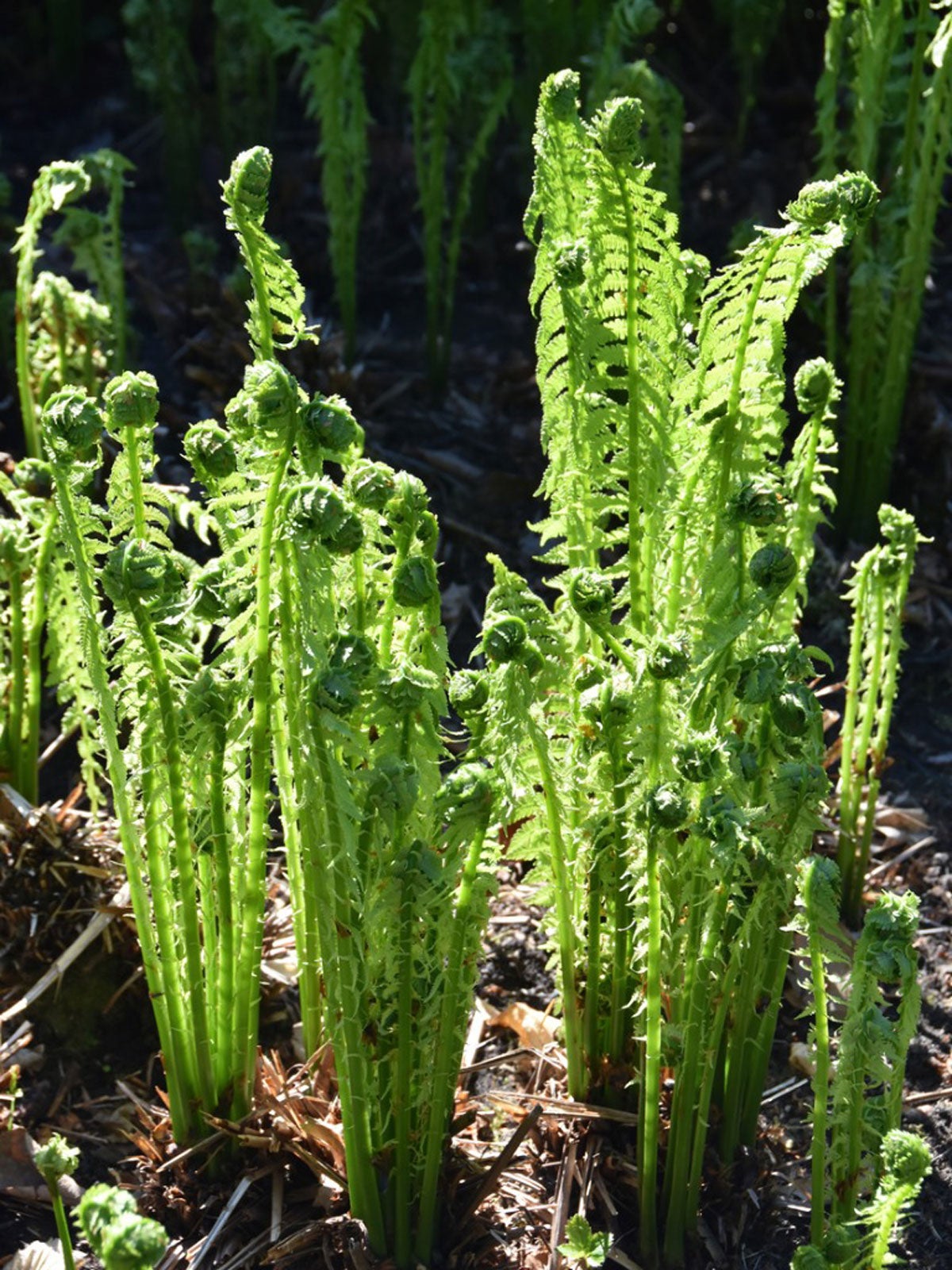Ostrich Fern Control – How To Stop Ostrich Ferns From Taking Over


For many gardeners, finding plants to beautify deep shade locations can prove to be quite the challenge. While brightly colored flowers may not be an option, choices of lush greenery abound.
The solution to this problem may also be found in the addition of native perennial foliage plants. Ostrich ferns are just one example of visually interesting plants which will thrive under more difficult growing conditions. In fact, many of these ferns grow so incredibly well, that growers often seek solutions for containing them within the flower bed. By incorporating a few simple techniques, you can easily maintain a tidy and well-behaved planting of ostrich ferns.
Ostrich Fern Control
Native ostrich fern plants are extremely hardy. Perennial across a wide range of growing zones, their versatility greatly lends to their use in landscape plantings. Once established, ostrich fern spread can reach roughly one additional square foot (.09 mˆ²) per growing season. Over time, this spread can crowd, shade, or completely overtake other more diminutive shade plants. This attribute is especially troublesome for those with limited growing space.
How to Stop Ostrich Ferns
Ostrich fern control will differ from one garden to another. However, the key method to slow ostrich fern spread is to focus on containment. If you’re without a large space dedicated to managing ostrich ferns you may choose to grow them in containers. Since the plants are partly spread by rhizomes, growing ostrich ferns in pots will help to ensure that this unruly species is kept in line. Ostrich ferns planted in containers can serve as an appealing and showy focal point near patios or on shaded porches.
Managing Ostrich Ferns
If ostrich ferns are spreading in flower bed plantings, you can slow ostrich fern spread by establishing well defined garden bed perimeters. This is most commonly done by chopping into the outer edge of the border with a sharp shovel or spade. More defined and ornamental barriers can be constructed with the use of stones or pavers.
Even with consistent ostrich fern control, many smaller plants may still escape into grassy or wooded areas. This is due to the plants’ ability to reproduce through spores. As wet spring weather arrives each season, spores germinate and are dispersed by the wind. Growers can check for these reproductive bodies by looking at the underside of fern leaves. Removal and disposal of these fronds can greatly reduce the likelihood of spread. Fortunately, unwanted new small ferns are easily removed by hand as they appear.
Gardening tips, videos, info and more delivered right to your inbox!
Sign up for the Gardening Know How newsletter today and receive a free copy of our e-book "How to Grow Delicious Tomatoes".

Tonya Barnett has been gardening for 13 years. Flowers are her passion. She has transformed her backyard into a cut flower garden, which she regularly chronicles on her YouTube channel http://www.youtube.com/@tonyawiththeflowers.
-
 Looking For Plants To Give You The Soft And Fuzzies? Try These 5 Fuzzy Leaf Plant Options
Looking For Plants To Give You The Soft And Fuzzies? Try These 5 Fuzzy Leaf Plant OptionsLovers of texture, drama, silver foliage and tactile plants will adore these special sensory garden additions. These fuzzy leaf plant options will leave you all aglow
By Susan Albert
-
 Get Ready For A Summer Of Hummers! Grow These Full Sun Hummingbird Plants and Flowers
Get Ready For A Summer Of Hummers! Grow These Full Sun Hummingbird Plants and FlowersIf you’re lucky enough to enjoy a sunny backyard, make sure you are maxing out on your pollinator opportunities and grow these full sun hummingbird plants and flowers
By Tonya Barnett
